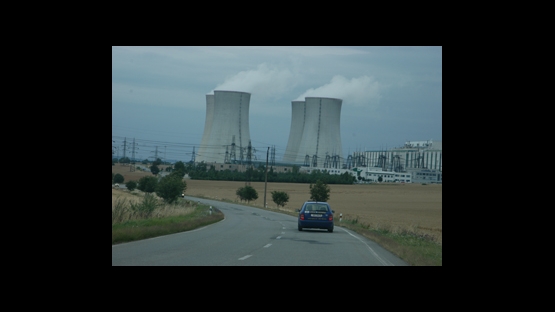The Fukushima-Daiichi nuclear accident will slow growth in nuclear power but not reverse it, according to the latest projections by the IAEA.
The IAEA publishes annually two updated projections for the world's nuclear power generating capacity, a low projection and a high projection. The 2011 updates take into account the effects of the 11 March 2011 accident.
In the updated low projection, the world's installed nuclear power capacity grows from 367 gigawatts (GW(e)) today to 501?GW(e) in 2030, down 8% from what was projected last year. In the updated high projection, it grows to
746?GW(e) in 2030, down 7% from last year. A GW(e) equals one billion watts of electrical power.
The number of operating nuclear reactors increases by about 90 by 2030 in the low projection and by about 350 in the high projection, from the current total of 433 reactors. Most of the growth will occur in countries that already have operating nuclear power plants.
Projected growth is greatest in the Far East. From 81?GW(e) at the end of 2010, capacity grows to 180?GW(e) in 2030 in the low projection and to 255?GW(e) in the high. These levels are, however, lower than last year's projections by
17?GW(e) and 12?GW(e) respectively.
Western Europe shows the biggest difference between the low and high projections. In the low projection, Western Europe's nuclear power capacity drops from 123?GW(e) at the end of 2010 to 83?GW(e) in 2030. In the high projection, nuclear power grows to 141?GW(e), but that is 17?GW(e) below the growth projected last year.
In North America, the low case projects a small decline, from 114?GW(e) at the end of 2010 to 111?GW(e) in 2030. The high projection projects an increase to 149?GW(e), still 17?GW(e) below last year's projection.
Other regions with substantial nuclear power programmes are Eastern Europe, which includes Russia, and the Middle East and South Asia, which includes India and Pakistan. Nuclear power expands in both regions in both the low and high projections - to only slightly lower levels than projected last year. The same is true for regions with smaller programmes - Latin America, Africa and South East Asia.
The low projection assumes current trends continue with few changes in policies affecting nuclear power. But it does not necessarily assume that all national targets for nuclear power will be achieved. It is a "conservative but plausible" projection.
The high projection assumes that the current financial and economic crises will be overcome relatively soon and past rates of economic growth and electricity demand would resume, notably in the Far East. It assumes stringent global policies to mitigate climate change.
The low and high projections are developed by experts from around the world who are assembled by the IAEA each spring. They consider all the operating reactors, possible license renewals, planned shutdowns and plausible construction projects foreseen for the next several decades. They build the projections project-by-project by assessing the plausibility of each in light of, first, the low projection's assumptions and, second, the high projection's assumptions.
Director General Yukiya Amano recently stated that the Fukushima-Daiichi nuclear accident "caused deep public anxiety throughout the world and damaged confidence in nuclear power." Since the accident, a number of countries announced reviews of their programmes, some took steps to phase out nuclear power entirely, and others re-emphasized their expansion plans. The continued growth in both the low and high projections suggests that the factors that contributed to increasing interest in nuclear power before the Fukushima Daiichi accident have not changed: these include increasing global demand for energy as well as concerns about climate change, volatile fossil fuel prices and security of energy supply.
The projections are available here.
The projections made in 2010 are accessible here.


